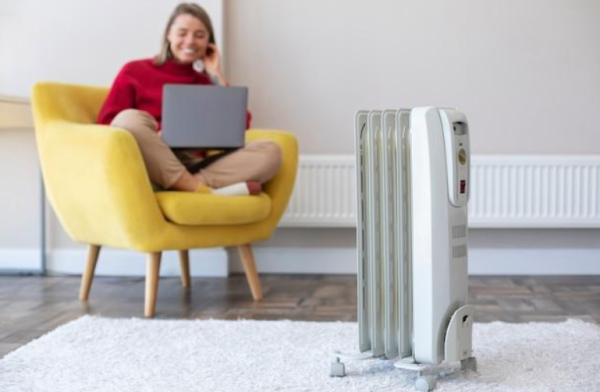
When summer temperatures soar, your home can quickly become uncomfortable if you don’t have central air conditioning or if running it constantly strains your budget. Fortunately, there are numerous cost-effective strategies to keep your living space cool and comfortable without sending your energy bills through the roof.
Optimize Your Windows
Windows are both your greatest ally and potential enemy in the battle against heat. During the day, about 30% of unwanted heat enters through windows. A strategic approach to window management can make a significant difference in your home’s temperature.
Start by keeping curtains and blinds closed during the hottest parts of the day, especially on south and west-facing windows that receive direct sunlight. Consider investing in thermal or blackout curtains, which can reduce heat gain by up to 33%. These specialized window treatments act as insulators, preventing the sun’s rays from heating your interior spaces.
For a more permanent solution, apply reflective window film to your glass. This transparent covering reflects sunlight away from your home while still allowing visibility. It’s an affordable DIY project that can block up to 85% of solar heat without obstructing your view.
Create Cross Ventilation
Proper airflow is essential for cooling your home naturally. On cooler mornings, evenings, or after sunset, open windows strategically to create cross ventilation. This involves opening windows on opposite sides of your home to create a pathway for air to flow through.
For example, this wall mounted fan positioned near a window can significantly enhance this natural ventilation. When placed to blow inward during cooler hours, it pulls fresh air inside. Alternatively, positioning a wall mounted fan to blow outward can help expel hot air that has accumulated during the day. This simple adjustment can make your cross-ventilation strategy much more effective without the expense of running an air conditioner.
Leverage Your Ceiling Fans
Ceiling fans use a fraction of the electricity that air conditioners require. Ensure your ceiling fans are set to rotate counterclockwise during summer months, which creates a direct downward airflow that produces a cooling wind-chill effect on your skin.
Remember that fans cool people, not rooms. They create a wind-chill effect that makes you feel cooler, but they don’t actually lower the air temperature. Turn fans off when you leave a room to avoid wasting electricity.
Minimize Heat-Generating Activities
Many common household activities generate significant heat. During hot weather, consider the following adjustments:
Cook outdoors when possible or use appliances that generate less heat, such as microwaves, slow cookers, or instant pots instead of conventional ovens.
Run heat-generating appliances like dishwashers, clothes dryers, and ovens during the cooler parts of the day, preferably early morning or late evening.
Air-dry clothes instead of using the dryer. This not only reduces heat but also saves energy and extends the life of your clothing.
Switch to LED bulbs, which emit less heat than incandescent ones while using less electricity.
DIY Cooling Solutions
Several homemade cooling methods can provide relief during particularly hot days:
Create a DIY air conditioner by placing a shallow bowl of ice in front of a fan. As the ice melts, the fan will blow cooler air throughout the room.
Use a spray bottle filled with water to mist yourself occasionally. As the water evaporates from your skin, it creates a cooling effect.
Place damp sheets over windows where breeze enters. As air passes through the damp fabric, it cools down before entering your home.
Strategic Landscaping
While this is a longer-term solution, strategic landscaping can significantly reduce your home’s temperature:
Plant deciduous trees on the south and west sides of your home. During summer, their leaves provide shade, while in winter, they shed leaves to allow warming sunlight through.
Create shade for walls and windows with trellises or pergolas covered with climbing plants.
Avoid extensive paved areas near your home, as they absorb and radiate heat. Instead, opt for ground covers, grasses, or other vegetation that cool through evaporation.
Insulate and Seal
While typically associated with keeping homes warm in winter, proper insulation also helps maintain cooler temperatures in summer by preventing heat transfer. Check your attic insulation, as inadequate coverage can allow significant heat to penetrate your living spaces from above.
Seal cracks and gaps around windows, doors, and ductwork to prevent warm air from seeping in. Weather stripping and caulk are inexpensive solutions that can make a noticeable difference in your home’s temperature and energy efficiency.
Upgrade Your Bedding
Getting quality sleep during hot weather can be challenging. Switch to lightweight, breathable bedding materials like cotton or bamboo, which wick moisture away from your body and allow better airflow. Consider a buckwheat pillow, which doesn’t retain heat like synthetic materials do.
For extremely hot nights, try the “Egyptian method” – dampen a sheet or large thin towel with cool water, wring it out well, and use it as a covering. The evaporation will cool you throughout the night.
Consider Spot Cooling
Sometimes cooling just one area makes more sense than trying to lower the temperature of your entire home. A wall mounted fan paired with some of the techniques mentioned above can create a comfortable microclimate in frequently used spaces like your home office or bedroom.
This targeted approach is much more economical than cooling unoccupied rooms and can provide immediate relief in the areas where you spend most of your time.
Long-term Investments
If your budget allows for moderate investments, consider these options that will pay off over time:
Install a whole-house fan, which pulls cool air in through windows and exhausts hot air through the attic. These fans use significantly less energy than air conditioning and can cool your entire home quickly during evenings when outdoor temperatures drop.
Upgrade to a programmable or smart thermostat if you do use air conditioning. This allows you to set higher temperatures when you’re away and cool your home just before you return.
Apply reflective roof coating or replace your roof with “cool roof” materials when it’s time for replacement. These surfaces reflect more sunlight and absorb less heat than standard roofing.
By implementing a combination of these strategies, you can maintain a comfortable living environment even during the hottest months without overreliance on expensive air conditioning. The key is to prevent heat buildup in the first place, create efficient airflow, and adopt habits that minimize indoor heat generation. With thoughtful planning and some minor adjustments to your daily routine, you can beat the heat while keeping your energy bills in check.









